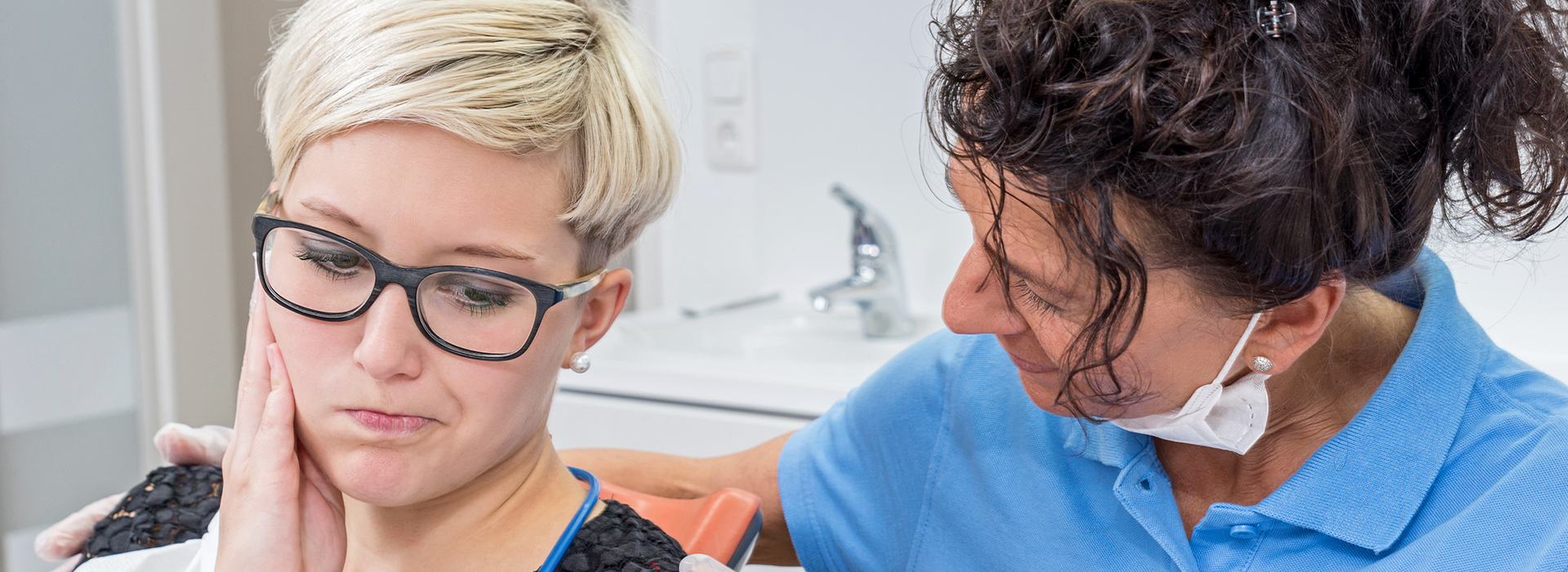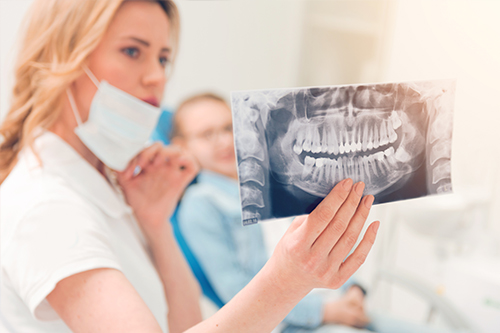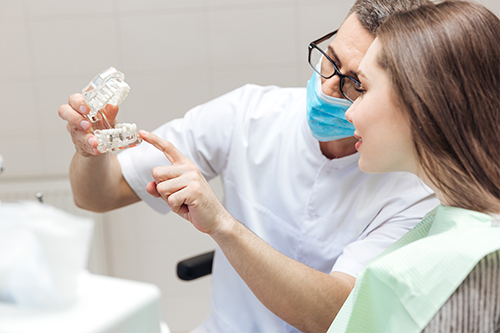
Not every dental problem requires an immediate trip to the office, but some situations do demand prompt attention to protect your smile and your overall health. A true dental emergency typically involves severe, uncontrolled pain, persistent bleeding, a knocked-out tooth, a facial injury, or signs of spreading infection such as fever, increasing swelling, or trouble breathing and swallowing. When these red flags appear, seeking care quickly can make the difference between saving a tooth and needing more extensive treatment later.
Other urgent concerns include a crown or filling that has come loose and is causing sharp pain, sudden swelling of the gums or face, or new, intense sensitivity that doesn’t respond to over-the-counter measures. Even when the problem seems limited to the mouth, oral infections can affect the rest of the body; acting promptly reduces the risk of complications. If you’re in doubt about whether a situation warrants emergency care, it’s better to arrange an evaluation than to wait and hope it improves.
At Addison Dental Studio, our team evaluates the situation quickly and prioritizes interventions that relieve pain and limit further damage. We focus on immediate stabilization first—controlling pain, stopping bleeding, and reducing infection—so that definitive treatment can follow under the best possible conditions. Quick, organized care decreases the likelihood of long-term problems and helps you feel more comfortable and confident about next steps.
When you arrive for an emergency appointment, the initial phase focuses on triage: we assess the most pressing issues, take a brief history of what happened, and identify any signs of infection, trauma, or systemic involvement. A focused clinical exam and appropriate imaging—such as digital radiographs or CBCT when needed—help us determine the extent of tooth, bone, and soft-tissue injury so we can make informed decisions about immediate care.
Pain control and infection management are often the first priorities. Depending on the situation, treatment can include local anesthesia, a temporary or permanent restoration, drainage of an abscess, or medications if there are systemic concerns. Our goal during the first visit is to stabilize the problem, relieve discomfort, and develop a clear plan for definitive care. We explain the options in straightforward terms so you can make an informed decision about next steps.
Follow-up planning is an essential part of emergency care. Some issues can be resolved in one visit; others require staged treatment—such as root canal therapy followed by a crown. We schedule timely follow-ups, coordinate any necessary specialist referrals, and provide written instructions for home care to support healing. Clear communication and careful documentation ensure continuity of care and the best possible outcomes.
Toothaches are among the most frequent reasons people seek emergency dental care. Causes range from deep decay and exposed dentin to cracks that expose the pulp. After diagnosing the source of pain, treatment may include removing decayed tissue and placing a filling, performing root canal therapy to treat an infected pulp, or stabilizing a fractured tooth with bonding or a crown. Managing pain and controlling infection are consistent priorities across these approaches.
Broken or chipped teeth are addressed based on the severity of the damage. Minor chips are often restored with bonding material to rebuild form and function. Larger fractures that compromise the structural integrity of the tooth may require a full-coverage crown or, if the fracture extends into the root, extraction may be necessary. When a tooth is knocked out, immediate care gives the best chance for reimplantation—proper handling and rapid replantation within a short window can preserve the natural tooth.
Dental infections and abscesses present another urgent category. Treatment commonly includes incision and drainage when appropriate, removal of the source of infection (for example, through root canal therapy or extraction), and adjunctive antimicrobial therapy when indicated. Controlling the infection promptly minimizes the risk of spread to surrounding tissues and decreases systemic effects such as fever and malaise. In all cases, removing the cause of infection is the cornerstone of lasting resolution.
When a tooth cannot be saved, extraction is performed with attention to comfort and healing. Modern techniques minimize trauma and promote predictable recovery. After extraction, we discuss tooth-replacement options to restore chewing function and appearance—options range from fixed bridges to implant-supported restorations—so you can plan a long-term solution that fits your needs and oral health goals.
While professional care should be sought as quickly as possible for true emergencies, there are practical, evidence-based steps you can take at home to reduce pain and protect oral structures until you reach the office. For bleeding, gently bite on clean gauze or a tea bag to apply pressure; avoid vigorous rinsing, which can disrupt clotting. A cold compress applied to the cheek for 10–15 minutes at a time helps limit swelling and provides comfort for soft-tissue injuries.
If a tooth has been knocked out, time and handling matter. Gently rinse the tooth if it is dirty (do not scrub), hold it by the crown (not the root), and attempt to reinsert it if possible. If reinsertion isn’t feasible, store the tooth in milk, saline, or a tooth-preservation solution and seek care immediately—teeth have a much better prognosis when reimplanted promptly. For severe pain, over-the-counter analgesics can be used according to label directions until definitive care is available; avoid placing aspirin directly on the gums or tooth, as this can cause tissue irritation.
Swelling that accompanies infection responds to short-term cold therapy initially and warm, moist heat later if drainage is established. Maintain hydration and avoid very hot, hard, or crunchy foods that could worsen pain or disrupt temporary restorations. Keep communication open with your dental provider—clear instructions about home care can speed recovery and reduce the chance of complications before your scheduled treatment.
Many dental emergencies are preventable. Routine dental care—regular exams, cleanings, and timely treatment of decay and periodontal disease—reduces the likelihood of sudden problems. Protective measures such as custom-fitted mouthguards for sports and night guards for patients who clench or grind their teeth also lower the risk of traumatic fractures and wear-related emergencies. Good oral hygiene and periodic professional monitoring remain the most effective long-term strategies.
Being prepared for a dental emergency means knowing where to go and what steps to take should one occur. Keep a small emergency kit on hand with gauze, a cold pack, and a container for a displaced tooth. Familiarize yourself with basic first-aid steps for dental injuries and store emergency-contact information for your dental office. Planning in advance reduces stress and leads to faster, more effective care when time is critical.
When urgent dental care is needed, a practice that combines prompt access with modern diagnostic tools and skilled clinicians provides the best outcomes. Addison Dental Studio emphasizes evidence-based approaches, compassionate care, and clear treatment planning so patients receive timely relief and a path forward to restore oral health and function.
In summary, dental emergencies demand timely action, informed assessment, and careful follow-up. If you or a family member experience severe oral pain, trauma, swelling, or signs of infection, contact us to arrange an evaluation and begin treatment. Our team is ready to help alleviate discomfort, stabilize urgent problems, and guide you through the appropriate next steps for lasting recovery.

Pain is your body's way of signaling that something is not quite right and though there are many reasons for oral pain, one of the most common complaints and reasons for seeking urgent dental care is a toothache. Whether you simply need a dental filling, a crown, or require a root canal procedure to save your tooth, we'll alleviate your discomfort and restore the look and function of the involved tooth.

Dental trauma can result in a defect as minor as a small chip in tooth enamel to a more extensive and painful crack or fracture. With sufficient force, a tooth can even be displaced or completely knocked out of its socket. With prompt emergency care, many injured teeth can be restored and saved.

The last teeth in your mouth to develop, wisdom teeth often do not have enough room to fully erupt or may be positioned in the wrong direction. These issues can affect your dental health as well as overall well-being. Our office provides skilled care to address the complications caused by problematic wisdom teeth.

A broken or lost dental prosthesis or restoration can cause embarrassing gaps in your smile as well as compromise your ability to eat and speak with ease. If you've lost or broken a dental filling, denture, crown, or other dental appliance, you can rely on our office to perform a prompt repair or provide a durable and cosmetically pleasing replacement as quickly as possible.
At the office of Addison Dental Studio, emergency appointments are always available. Of course, in addition to providing top treatment for dental emergencies, we also welcome patients searching for high quality and affordable care. We offer a complete range of the latest and best cosmetic and dental services for every member of your family.
If you are suffering from a toothache or have sustained a dental injury, it is important to visit the dentist as soon as possible before more serious complications arise. Whether your dental emergency is painful, if it affects the appearance of your smile, or if you suspect that an infection is present, our office will make every effort to see you as promptly as possible for care.
At the office of Addison Dental Studio, we treat your dental emergency as our top priority. Our caring team will respond to your emergency call right away, making sure you get the gentle, state-of-the-art care you need without delay.
As your trusted emergency dentist in Addison, we provide the highest quality of care to mitigate the stress, anxiety, and discomfort of dental problems. Our dedicated team will help you start feeling better as soon as we receive your emergency call.
At the office of Addison Dental Studio, we provide skilled and experienced care to effectively resolve a broad range of dental emergencies, restoring a patient's oral health while protecting their overall wellbeing.
However, even so, specific dental emergencies pose significant threats to one's health. These situations require immediate, emergency room care. Serious and potentially life-threatening dental emergencies include significant oral and facial trauma such as jaw fractures, deep wounds or lacerations to the face and mouth, an abscess or infection that causes widespread facial or submandibular swelling, or affects breathing and swallowing.
At the office of Addison Dental Studio, we provide prompt, skilled, and experienced care to address dental emergencies. We understand that finances are always a concern and do our best to provide options in care that are both affordable and respect your budget.
Once we've had the opportunity to examine your smile, we can give you a clear picture of any existing dental issues, along with a quote for what the cost of treatment will be. The cost of care all depends upon the extent and complexity of issues affecting the health or appearance of your smile and the types of procedures that are required.
To help alleviate any additional stress or delay, you can count on our staff to work with you to optimize coverage for your dental care and to minimize your out-of-pocket expenses. For patients without insurance, we strive to make things easier as well! We invite you to visit our financial information page or speak to an expert in our business office.
Dental emergencies are often painful and debilitating experiences. For this reason it's important to have an emergency dentist in Addison, who welcomes patients with urgent dental needs while providing the prompt care required to restore oral health.
Here are just some of the reasons why so many patients choose our office for emergency dental care and to meet their family's dental needs:
We're dedicated to helping patients enjoy good oral health and beautiful smiles. We look forward to helping you keep your smile in tip-top condition. You can rest assured that our highly skilled office team will provide you the highest quality of state-of-the-art dental care and have you smiling again in no time!
To make an appointment or for more information on our office and the many state-of-the-art services we provide, give us a call today.
A dental emergency is any oral condition that requires immediate attention to relieve severe pain, stop uncontrolled bleeding, or prevent the spread of infection. Examples include a knocked-out tooth, intense toothache that does not respond to home measures, large fractures that expose the nerve, and rapidly progressing facial swelling or fever. Timely assessment reduces the risk of permanent damage and improves the chance of saving teeth and surrounding tissues.
Not every problem needs same-day treatment, but distinguishing urgent issues from routine concerns is important for safety and outcomes. If you are unsure whether a situation qualifies as an emergency, contacting your dental office for guidance is the safest course. Quick triage helps prioritize care and limits complications that can affect oral and overall health.
When a tooth is completely displaced from the socket, time and handling are critical to preservation. Rinse the tooth gently with water if it is dirty, avoid touching the root, and attempt to reinsert it into the socket if you can do so without forcing it.
If reinsertion is not possible, place the tooth in milk, saline, or a tooth-preservation solution and seek dental care immediately; the chance of successful reimplantation is highest within the first hour. Keep a cold compress on the face to limit swelling and bring the tooth to your appointment with you for the clinician to evaluate reimplantation options.
A toothache that is severe, persistent, or accompanied by swelling, fever, difficulty breathing or swallowing, or spreading redness should be treated as an emergency. Deep decay, an exposed nerve, or an abscess can produce intense pain and systemic symptoms that require prompt professional management to prevent progression.
For milder pain, over-the-counter analgesics and careful home care may provide temporary relief, but you should still arrange an evaluation to identify the cause and definitive treatment. Early diagnosis prevents complications and often simplifies the necessary procedures to restore comfort and function.
Rapidly increasing facial swelling, fever, or difficulty breathing and swallowing are warning signs of a spreading infection and demand immediate attention. These symptoms indicate the infection may have moved beyond the local tooth area and could affect deeper spaces in the face and neck, presenting a risk to overall health.
Seek urgent dental evaluation or emergency medical care depending on severity; treatment typically includes drainage if an abscess is present, removal of the infection source, and appropriate antimicrobial therapy when indicated. Early intervention helps prevent more serious complications and promotes faster recovery.
Emergency treatment for a fractured tooth focuses on stabilizing the tooth, controlling pain, and protecting exposed tissues. Minor chips are often smoothed and repaired with bonding, while larger fractures may require a temporary restoration or a full-coverage crown to restore function and protect the pulp.
If the fracture exposes the nerve or extends below the gum line, endodontic treatment or extraction may be necessary as part of the definitive plan. The initial visit prioritizes comfort and stabilization so that a comprehensive restorative plan can be implemented safely and predictably.
A lost crown or filling can expose sensitive tooth structure and allow decay or infection to progress; it may also cause sharp or throbbing pain. If possible, save and bring the restoration to your appointment, and avoid chewing on the affected side until you can be evaluated.
Temporary measures include applying dental cement designed for temporary restorations or gently covering exposed areas with dental wax, but these are short-term solutions. Prompt professional assessment will determine whether the original restoration can be replaced or if more extensive treatment is required to protect the tooth.
Extraction becomes necessary in emergency situations when a tooth is fractured beyond repair, the infection cannot be controlled by endodontic therapy, or the tooth poses a risk to surrounding structures. The decision to extract is based on clinical examination, imaging, and consideration of long-term prognosis for the tooth.
Modern extraction techniques focus on minimizing trauma and supporting predictable healing, and clinicians will discuss options to replace the missing tooth when appropriate. Planning for extraction and subsequent rehabilitation ensures that both immediate symptoms and long-term function are addressed responsibly.
Imaging and targeted tests are commonly used during emergency visits to define the extent of injury or infection and to guide treatment choices. Digital radiographs often reveal root fractures, periapical infections, and bone involvement, while cone-beam computed tomography (CBCT) may be used for complex trauma or when detailed three-dimensional information is necessary.
These tools allow clinicians to make informed decisions quickly and tailor emergency interventions to the specific situation. Appropriate imaging supports accurate diagnosis, safer procedures, and better outcomes during follow-up care.
The emergency room is the appropriate choice for life-threatening situations such as severe facial trauma with airway compromise, uncontrolled bleeding that cannot be managed with direct pressure, or systemic symptoms like high fever and difficulty breathing. Emergency departments can stabilize acute medical problems and coordinate urgent transfer to dental or surgical specialists when needed.
For most dental emergencies that involve localized pain, a knocked-out tooth, or a dental abscess without signs of systemic compromise, contacting your dental office for prompt evaluation is preferable. Your dentist can provide targeted oral care, arrange same-day treatment, and coordinate follow-up restoration or specialist referrals as required.
The practice triages emergency calls to identify urgent needs and schedule patients for prompt evaluation, with an emphasis on pain control, infection management, and stabilization. During the initial visit, clinicians document findings, perform targeted imaging when indicated, and set a clear plan for definitive treatment or referral.
Follow-up is coordinated to monitor healing and complete any staged procedures such as root canal therapy, crowns, or restorations, and written home-care instructions are provided to support recovery. Clear communication and timely appointments help patients transition from emergency relief to a long-term restorative plan.
Quick Links
Contact Us